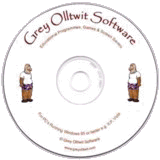
About Us
ADD/ADHD News
ADD/ADHD Books
ADDerwards
Creative ADDers
Donate
Events
GO Games
Information
Links
Natural Remedies
Research
Resources
Support Groups
Whats New
ADHD SOFTWARE
FREE DVD or CD

ADD/ADHD Online Information
In The Press
Now What
Did I Just
Say To You?What exactly are ADD and ADHD? In this article, Caroline Hensby helps spot symptoms in young children, and shares advice on how to help them in the classroom.
Caroline Hensby
runs, with her husband,
www.adders.org, a web site
offering information on ADD
and ADHD and support for
sufferers and their families.
They also run a local
support group in east KentYou have probably heard of the term ADHD, though not necessarily of ADD. ADHD is better known because the H part, which stands for 'hyperactivity', is more obvious. ADD is attention deficit disorder.
A lot of children, such as those who are extremely quiet and seem to be in a constant daydream, are often not diagnosed as having a learning difficulty.
This is the condition of ADD, i.e. ADHD without the hyperactive element. Those with hyperactivity and severe impulsive behaviours are more easily recognisable, always on the go, flitting from one activity to another, always interrupting, always demanding attention.
We could say that most pre-schoolers display these symptoms but those who we are concerned with, display these signs over and above others of their own age.
Neither condition is caused by bad parenting. They result from a chemical imbalance in the brain and are proven medical conditions.
There are no official statistics for the prevalence of ADD/ADHD in any age group, let alone within the under-fives. However, conservative estimates indicate that at least one in every 30 children suffers with ADD/ADHD, i.e. one in every playgroup/class.
Symptoms
· Impulsive behaviour: of course, many under-fives show a degree of impulsiveness. But if a child tears up the picture he has just drawn, he can get upset, as he cannot take that picture home.The child may do this two or three times before learning that his action has a nasty consequence. Children with ADHD never seem to learn this concept. They continue to get upset.
They cannot wait their turn in games or conversations either, no matter how many times we tell them to. They always have to do everything now.
· Hyper/over activity: this can be hard work for parents and carers alike. Are not all small children very active? Of course, and we would think there was something wrong if they sat still all the time.
The difference with children with ADHD is that they are always on the go. Mealtimes are a nightmare, and at story time they will not sit still for even a couple of minutes.
They are still full of energy at midnight and beyond. Due to the over activity and impulsive behaviour these children can quite often injure themselves, for no apparent reason, so we have to keep a constant watch.
· Inattention: whilst this is present in both ADD and ADHD children, this is more obvious in those with ADD. These children are not always recognised as having a problem. They can appear happy and content with their own company, sitting quietly but not actually playing or participating in other activities.
These children cause us very little problem with demands on our time, so they can easily slip through the net, earning labels of 'lazy' and 'stupid'.
· Poor short-term memory: these children can have very poor short-term memory and often cannot remember more than one thing at a time.
Page 2
The above article appeared in The Early Years Educator, Volume 1 No.9, January 2000
Home About Us ADD/ADHD News ADDerwards Advertising Books Contact Us Creative ADDers Donate
Events Forums Information Links Natural Remedies ADDers.org News Research Resources Search adders.org
Site Map Social Stories Sponsor Events Student/Researchers Support Groups Supporters

ADHD SOFTWARE
FREE DVD or CD

